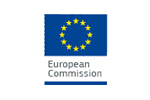In European societies, increasingly reshaped by migration, the fight against racism and xenophobia is a key challenge for democracy and civil life. Despite anti-discrimination legislation that is in force in EU Member States, there is still a fundamental problem in identifying different forms of racism and xenophobia. These may consist of physical attacks against people or of verbal abuse through hate speech, that is, ‘racial’ and xenophobic discourses “which spread, incite, promote or justify racial hatred, xenophobia, anti-Semitism or other forms of hatred based on intolerance, including: intolerance expressed by aggressive nationalism and ethnocentrism, discrimination and hostility against minorities, migrants and people of immigrant origin” [Council of Europe’s Committee of Ministers’ Recommendation 97(20)].
A hate crime is never an isolated act; it is usually triggered and fostered by hate speech, consisting of discourses that express disdain, hatred, prejudice, etc. Such discourses are performed not only in direct face-to-face communication through public and private conversations, but they also take place online, in political discussions, in the media, as well as in other institutional contexts. Hate crimes may also follow from hate-oriented communication practices based on other communication levels, such as voice (paraverbal message), body language (non-verbal message), images (visual message). Finally, racist discourse often does not simply consist in explicit hatred, prejudice and disdain, but it may also take the form of an apparently benevolent recognition of the differences that presupposes a stereotypization of an individual’s cultural and social identity. In this case, what may seem like a respectful recognition of differences masks underlying stereotypes and prejudices that ultimately become labels and stigmas for the individuals.
Furthermore, it has become increasingly difficult for judges, the police, politicians and the public to identify whether a physical offence is triggered by xenophobia, because it has to be interpreted within the context in which it has taken place. For this reason, it is often the case that ‘racial’ hate crimes are not recognized as such, which leads to an underestimation of the phenomenon. Treating crimes that are motivated by ‘racial’ hatred as non-‘racial’ crimes leads to the violation of fundamental human rights. It is therefore essential that law enforcing and legal authorities, along with journalists and politicians, have tools for correctly identifying the motivation that underlies such criminal acts.
This interpretative work allows us to define such actions in terms of hate crime offences The overall aim of this project was to provide law enforcement officials and legal professionals with the necessary tools, mainly through open training activities, aimed at facilitating the identification of ‘racial’ motivated hate communication. For this purpose, interpretative work was carried out based on interviews with hate crime victims, as well as online and printed examples of hate-oriented communication practices in six different countries. This material was analyzed and categorized for the purposes of designing a communication-based training course based on the GINCO* concept of competence-oriented learning and self-evaluation. The course was suitable for professionals and actual or potential hate-crime victims at national level, as well as for trainers at international level. Further learning resources and facilities were provided to offer online learning events. Finally, the project aimed at producing a publication with concrete tools, recommendations and best practice examples to facilitate anti-discrimination and anti-racist actions and regulations.
The project was co-financed by the European Commission, Directorate-General Justice
More info: http://win.radar.communicationproject.eu/web







